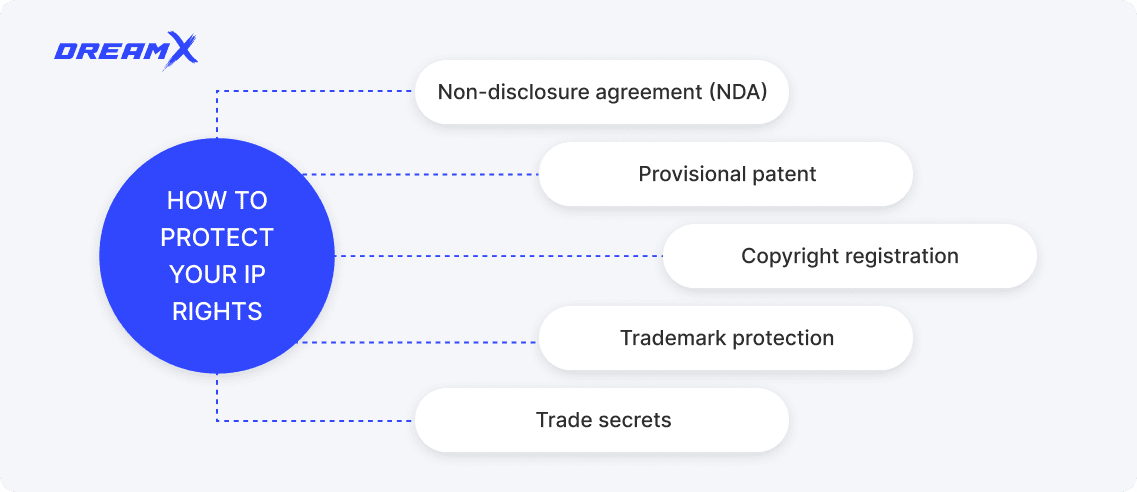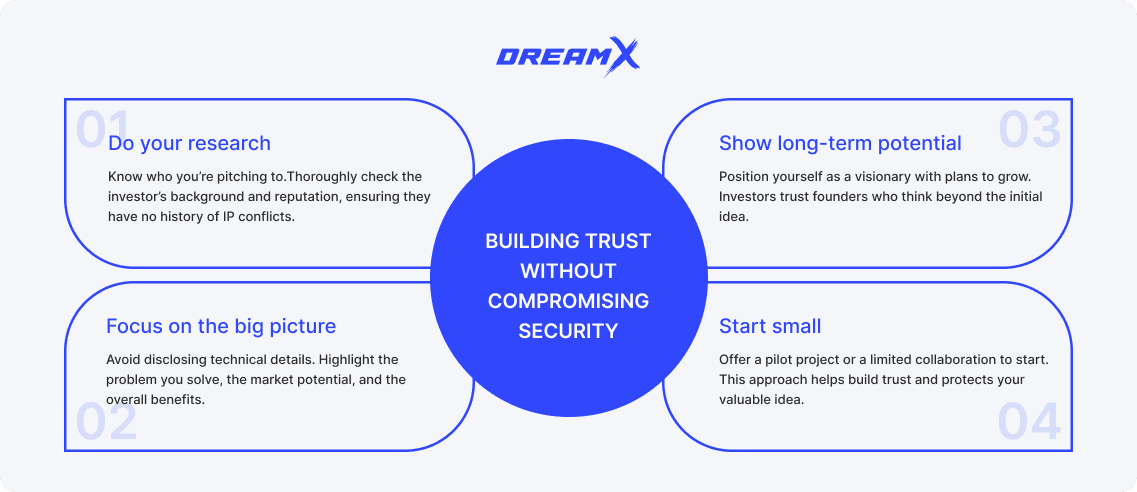Imagine you are a startup founder who has spent months developing a unique business solution. And now you need funding to bring it to life. So, you start looking for an investor to pitch to. But you can’t shake one nagging thought: what if your idea is so tempting that someone may steal it? It’s not easy to steal a well-developed, technical idea, but it does happen, and more often than you think.
Intellectual property theft is a real problem, and it costs creators and businesses a massive amount each year. For example, in the USA, intellectual property theft costs the economy up to $600 billion annually. That’s why protecting an idea is something every founder should seriously consider. So, how to sell an idea to a company without them stealing it?
Risks of sharing your idea
Sharing your investor pitch deck is exciting but also risky. Once it’s out there, you’re counting on others to respect your idea ownership. However, not everyone plays fair. Some may take your concept and run with it, and others could use parts of it and build something similar. Big companies especially have the tools, money, and teams to move faster than you and get a competitive advantage. In some cases, pitch meetings turn into free brainstorming sessions, where your idea helps shape their next project. Even unintentionally, your ideas can get absorbed by others without credit. That’s why early-stage startup protection is crucial.
A good example is Threads, launched by Meta in July 2023. Many saw it as a direct copy of X (formerly Twitter). Threads looked and worked exactly like X - similar features like text posts, replies, and reposts. Meta said their goal was to build a “friendly community” and denied hiring former Twitter employees to get secrets. This shows how big companies with big pockets can quickly create products like yours.
Legal protections for your idea
You can’t copyright a raw idea, but you can protect how you show it, build it, or name it. There are several options for protecting your IP rights during strategic pitching:
Non-disclosure agreement (NDA)
An NDA is a legal confidentiality agreement that asks anyone you share your idea with to keep it secret. It protects your idea during meetings – those who sign it cannot share or use it without your permission. NDAs are best when you want pitch deck confidentiality.
Provisional patent
A provisional patent gives you temporary innovation protection. It gives you roughly a year to work on a full patent application. During this time, others cannot copy your idea. A provisional patent is a great solution if you are working on a new product or technology.
Copyright registration
Copyright protects creative work. It can be writing, photos, videos, or software. When you register it, you prove you own it and stop others from using or copying it without permission. It’s best for creative content such as blogs, graphics, or videos.
Trademark protection
A trademark protects names, logos, or slogans that represent your brand. Registering a trademark stops others from using similar marks that confuse customers. Use trademarks when you want to protect your business identity and build brand recognition.
Trade secrets
Trade secrets are important business information, like recipes or formulas, that must be kept private from competitors. You don’t register them, but you must keep them secret inside your company. Trade secrets work best when you want to keep business confidentiality.
Practical steps to protect your idea
Imagine you have created a great SaaS product. Even if you have strong investor trust, these tips are never superfluous:
Keep detailed records of your SaaS idea - everything from early sketches and user flows to feature descriptions. Use document watermarking on your SaaS pitch deck and prototypes. It helps track your work and prevent misuse. This kind of clear documentation is important for protecting an idea and supporting startup funding security as you move toward idea commercialization.
When preparing an investor pitch deck outline, focus on the problem your SaaS solves and the benefits. However, don’t reveal sensitive technical details. This helps protect your unique innovation during early discussions.
Always request signed Non-Disclosure Agreements (NDAs) or partnership agreements before sharing confidential information, and walk away without hesitation if investors resist. Good contract negotiation guarantees that your rights stay protected.
If your SaaS uses unique technology, consider a provisional patent to prevent invention disclosure. And always keep detailed records of all communications and meetings. This documentation supports your ownership claims and is essential when you need startup legal advice.
Building trust without compromising security
In every cooperation, trust is everything. But how to protect an idea and build that trust? The goal is to find a balance - show enough to get the investor interested, but keep the core details.
First, do your research. Find out who you’re pitching to and learn more about their reputation with startups. Check whether they had any IP issues before.
Never open the technical aspects of your invention. Talk about the problem you solve, the market potential, and the big-picture benefits. Save the details for later, when you know they’re serious.
Try to look like a long-term player, not just someone with a one-off idea. Show that you’ve got vision, skills, and plans to grow. Investors love to see the future.
Start small. You may offer a pilot or a limited collaboration. It builds trust on both sides and guarantees innovation security.
Red flags and warning signs to watch for
Certain things are clear signals that you should take a pause. For example, if someone won’t sign a simple NDA, that’s a big red flag. Real investors understand why you want to protect an idea and respect it. Sometimes, big companies say they don’t work with NDAs - it’s pretty common, but you still need to be careful.
Also, stay alert if they focus too much on the technical details before showing real interest in your product. If they suddenly lose interest after you share important info, they need only your idea, but not you. And never agree to free consulting or detailed work without any commitment - that’s also a red flag.
The audience also matters. If you are talking to tech people and not decision-makers, they may want to learn your secrets, not partner with you. And if they delay things without clear answers or next steps, that’s another bad sign. Good partners communicate clearly and respect your time.
Conclusion
Protecting your idea doesn’t mean you should hide it. It means you should share it carefully. Use legal safeguards (NDAs, patents), control disclosures, and build trust gradually. These steps help you share your ideas safely and confidently. If you hesitate about what to include in your pitch deck and what to leave for a later stage, DreamX is ready to help you. We have expertise in crafting pitches for many industries. Let us help you sell your product and protect your IP rights!






